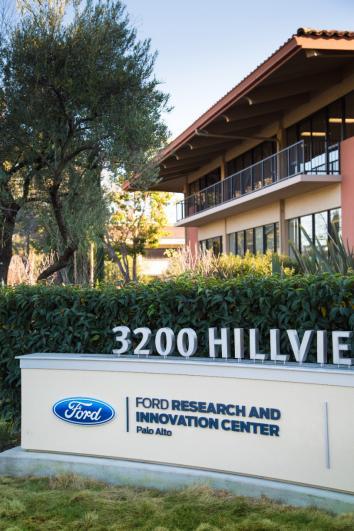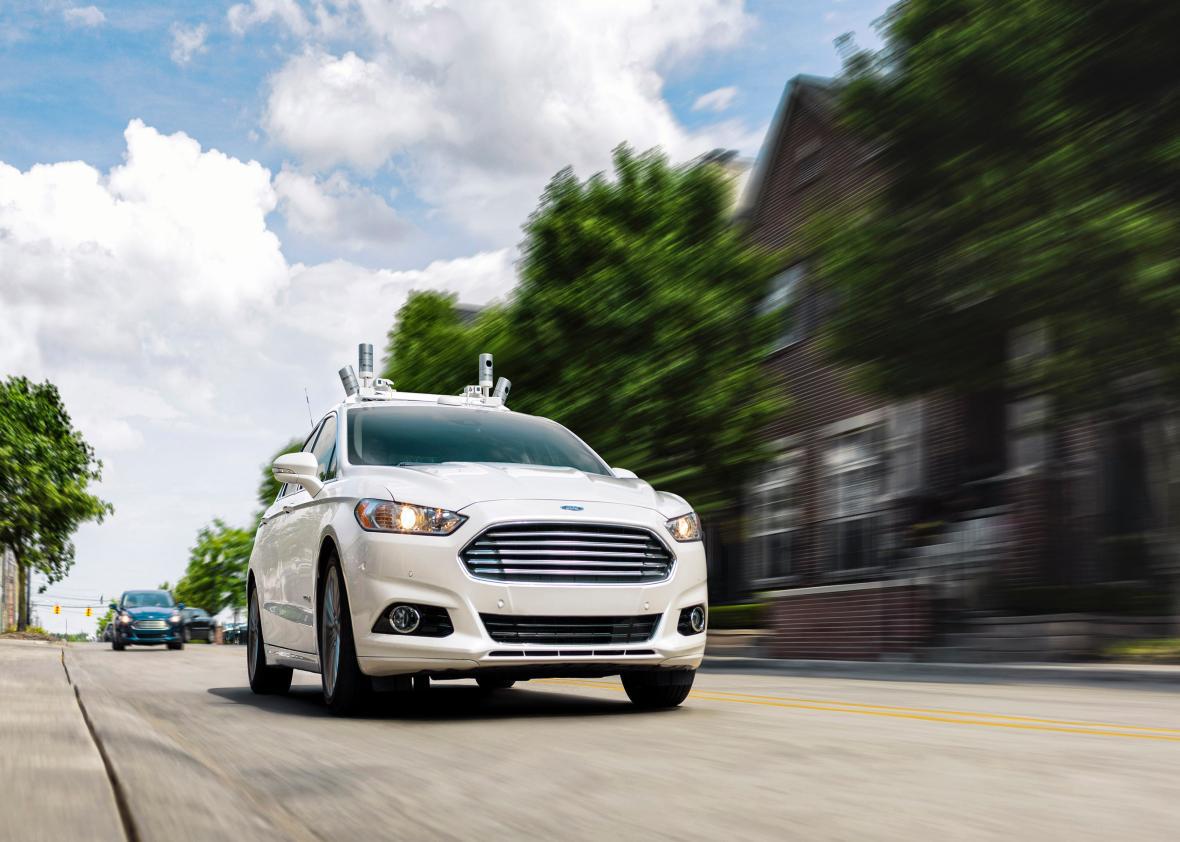In five years, you’ll be able to hail a driverless Ford on the streets of major cities, the company said Tuesday.
“We’re announcing today our intent to have a high-volume, fully autonomous vehicle in commercial operation by 2021,” Ford Motor Company CEO Mark Fields said in a telephone interview. That vehicle will have “no steering wheel, no brake pedals, no gas pedals.” You’ll just hop in, tell it where to go, and sit back while it takes you there.
The shift to driverless cars will have “just as significant an impact on society as Ford’s moving assembly line did more than 100 years ago,” Fields predicted.
Given the heavy investments in autonomous vehicles by Google, Uber, Tesla, and reportedly Apple, along with other carmakers, that shift is likely to happen with or without Ford’s involvement. Under Fields, however, the company has apparently decided it wants to help drive the change, rather than playing wait-and-see as some others have. The company announced Tuesday that it is doubling its Silicon Valley workforce to 260 and dramatically expanding its Palo Alto research campus. And it announced deals with four companies that build related technology.
The headliner is a $150 million funding round for Velodyne, which Ford is co-leading with the Chinese Internet company Baidu. Velodyne has become a leader in LIDAR sensor systems, which use lasers to map and track the environment around a car. Google, among others, uses LIDAR technology in its driverless concept cars. Tesla, notably, does not use LIDAR in its Autopilot software, probably because the sensors are extremely expensive.
Ford has also acquired an Israel-based computer vision company called SAIPS, invested in the Berkeley-based mapping startup Civil Maps, and signed an exclusive licensing agreement with the machine vision company Nirenberg Neuroscience.

Image courtesy of Ford Motor Co.
Meanwhile, Ford already has on the road a test fleet of 10 self-driving Fusion Hybrid cars, a number it plans to triple to 30 by year’s end, and again to 90 next year. The company says that will make its autonomous test fleet the largest of any major automaker.
The upshot: Gradually, Ford is starting to look like a tech company.
“We’ve taken our time to discuss our autonomous vehicle plans,” Fields said. “The reason we’ve taken our time is because our philosophy is that we’re not in a race to make announcements. We’re in a race to do what’s right for the business and our customers. We want to think through this in a holistic way, a very deliberate and strategic way.”
That might sound like marketing boilerplate. But it could also be read as a veiled jab at Tesla, whose aggressive rollout of its Autopilot system has put it on the leading edge of the movement toward self-driving cars—but has also risked a backlash against the technology.
Ford has explicitly rejected Tesla-style partial automation, preferring to leap straight from basic driver-assistance technologies to a fully self-driving car. From a technological standpoint, that sort of top-down development is often suboptimal, because you have to solve a very hard problem all at once rather than incrementally. But from a consumer-safety standpoint, it makes sense: Ford doesn’t want to beta-test its cars on the public.
Yet the timeline that Ford announced on Tuesday is not a conservative one. Commercial rollout in 2021 is one of the earlier deadlines that a major automaker has set for itself. Uber’s Travis Kalanick, for example, has predicted that his company’s fleet will be fully autonomous by 2030. Tesla CEO Elon Musk has said he believes his company could have the technology ready by 2018, but he predicted that regulatory approval will take a few years after that.
Ford probably won’t be the first to market with an autonomous vehicle, even if all goes according to plan. If the tech is ready by then, Tesla and others will almost certainly roll it out first.
Rather, Ford’s goal is to reprise its role in the original automotive revolution: It doesn’t want to be the company that invents driverless cars, but the one that brings them to the masses.
To that end, the company says its first driverless car will not be for sale to consumers. The technology, including LIDAR systems, will limit early autonomous vehicles to the luxury market. Instead, Ford plans to design the car explicitly for the ride-sharing and ride-hailing market. By eliminating the driver from the equation, it believes it can make ride-hailing cheaper even if the car itself is expensive.
When Tesla disclosed the fatal crash of a Model S on Autopilot in June, many predicted that the news would set back the development and adoption of driverless cars across the industry. But in an August column in the Conversation, republished in Future Tense, William Messner made the counter-intuitive case that it could accelerate the technology’s progress. Ford’s announcement signals that at least one major automaker is in fact redoubling its efforts, perhaps encouraged that its approach was the right one all along.
